Abstract
In Aerobacter aerogenes, the mutational event permitting the utilization of d-arabinose as a source of carbon and energy is a regulatory mutation resulting in the constitutive synthesis of certain enzymes of the l-fucose catabolic pathway. l-Fucose isomerase catalyzes the isomerization of d-arabinose to d-ribulose. This enzyme was purified to homogeneity as indicated by a single band in disc-gel electrophoretic columns and single peaks with column chromatography and ultracentrifugation from the wild-type PRL-R3 strain, induced with l-fucose and two constitutive mutants, 502 and 510. The ratios of the activities of this isomerase on d-arabinose and l-fucose remained constant throughout all purifications. The apparent Km of the isomerase from the wild-type strain induced with l-fucose and from the constitutive mutant strains was 5.0 × 10−2m for l-fucose and 1.5 × 10−1m for d-arabinose. A strain 531 possessing an apparent alteration in the isomerase was isolated from the strain 502. This altered isomerase exhibited a lowered Km for d-arabinose.
Full text
PDF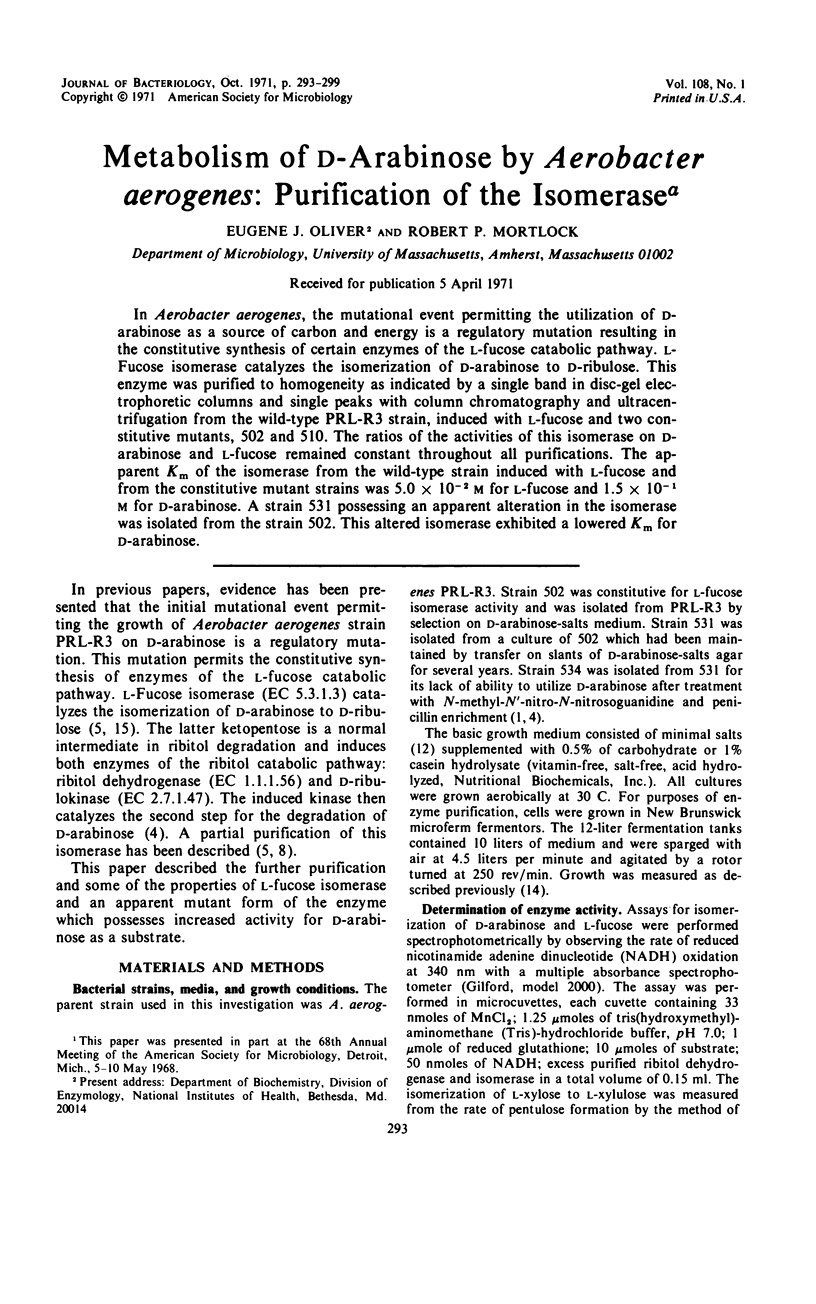
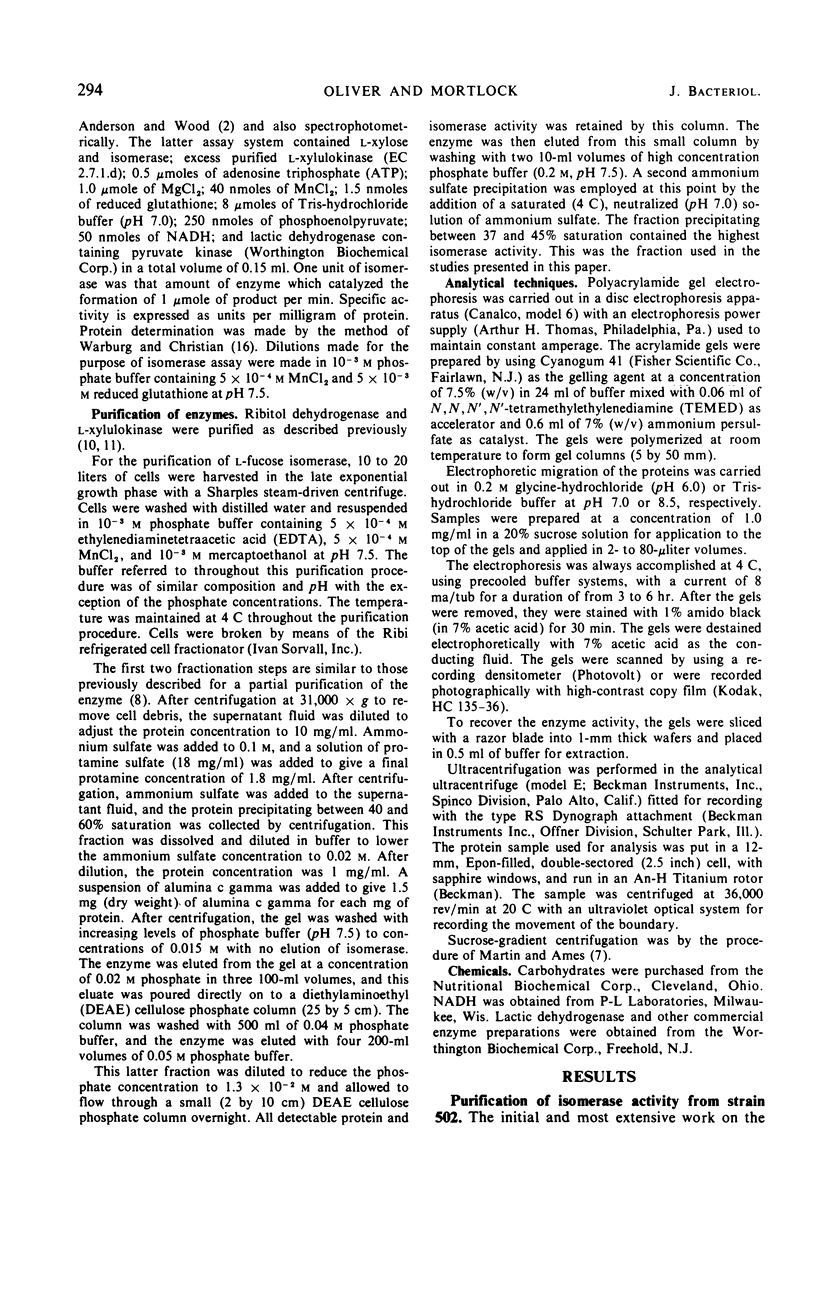
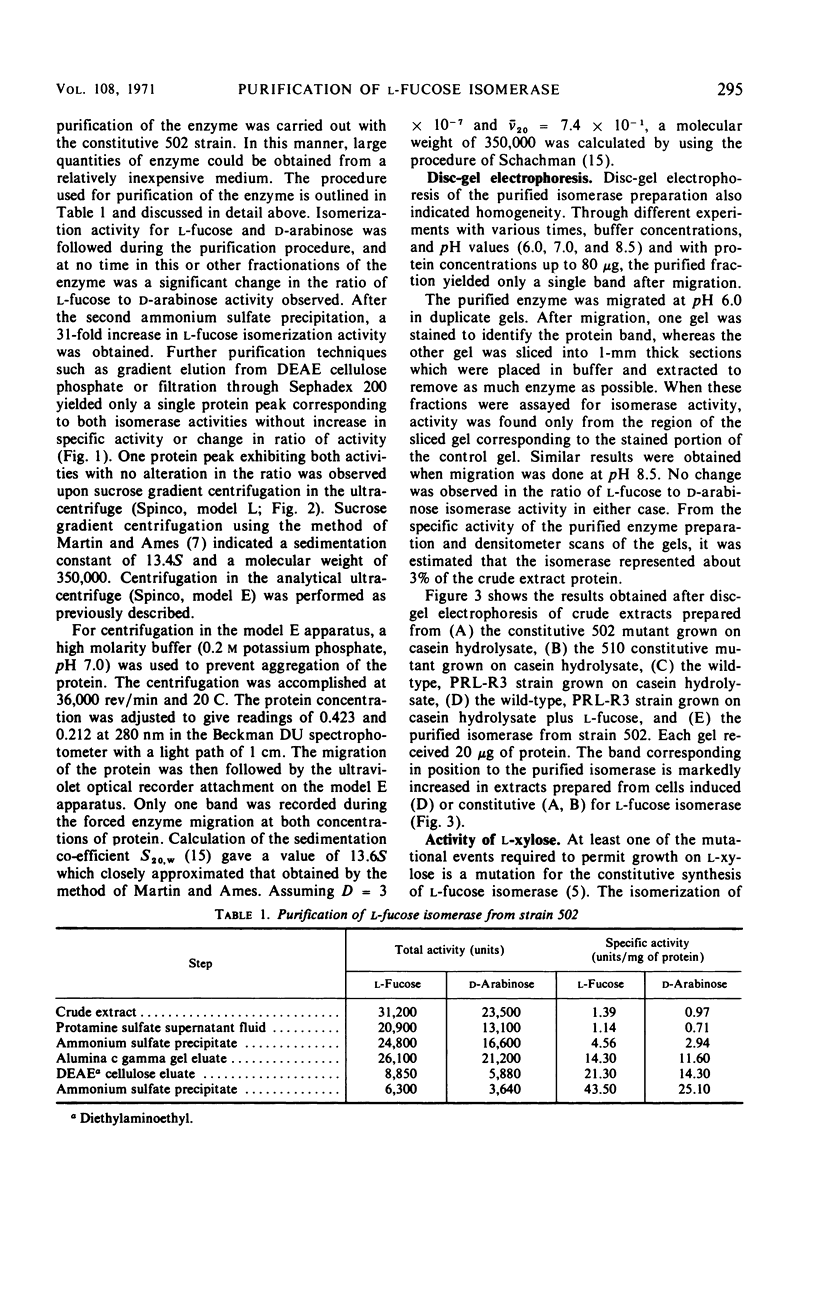
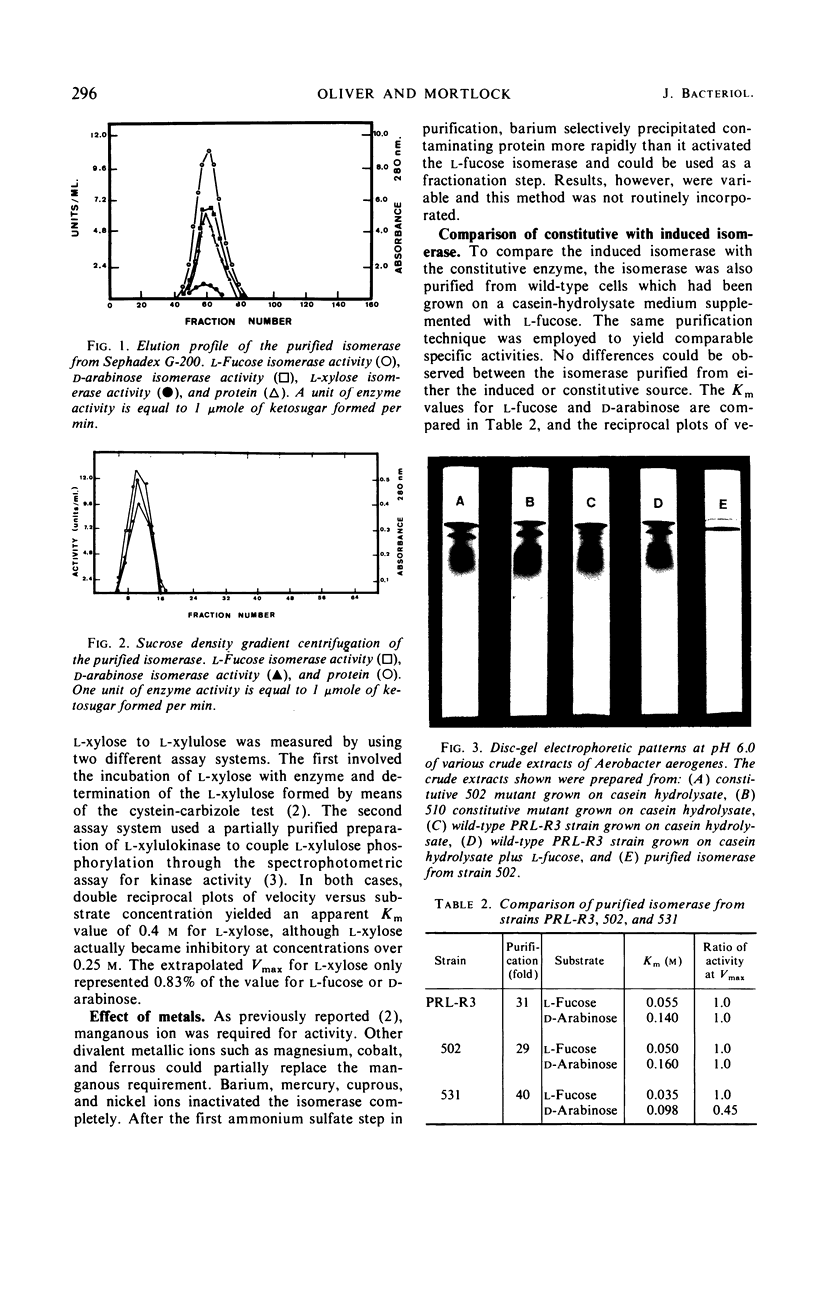
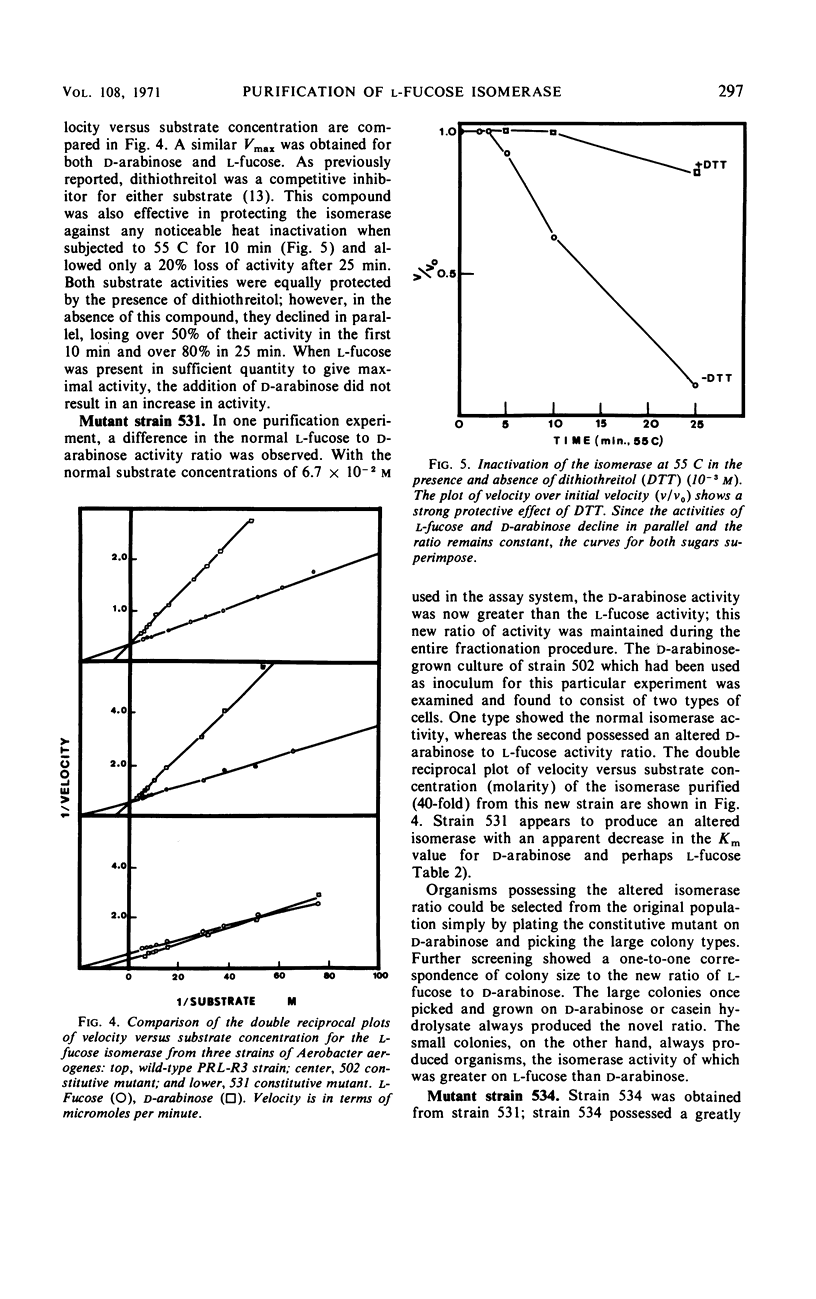

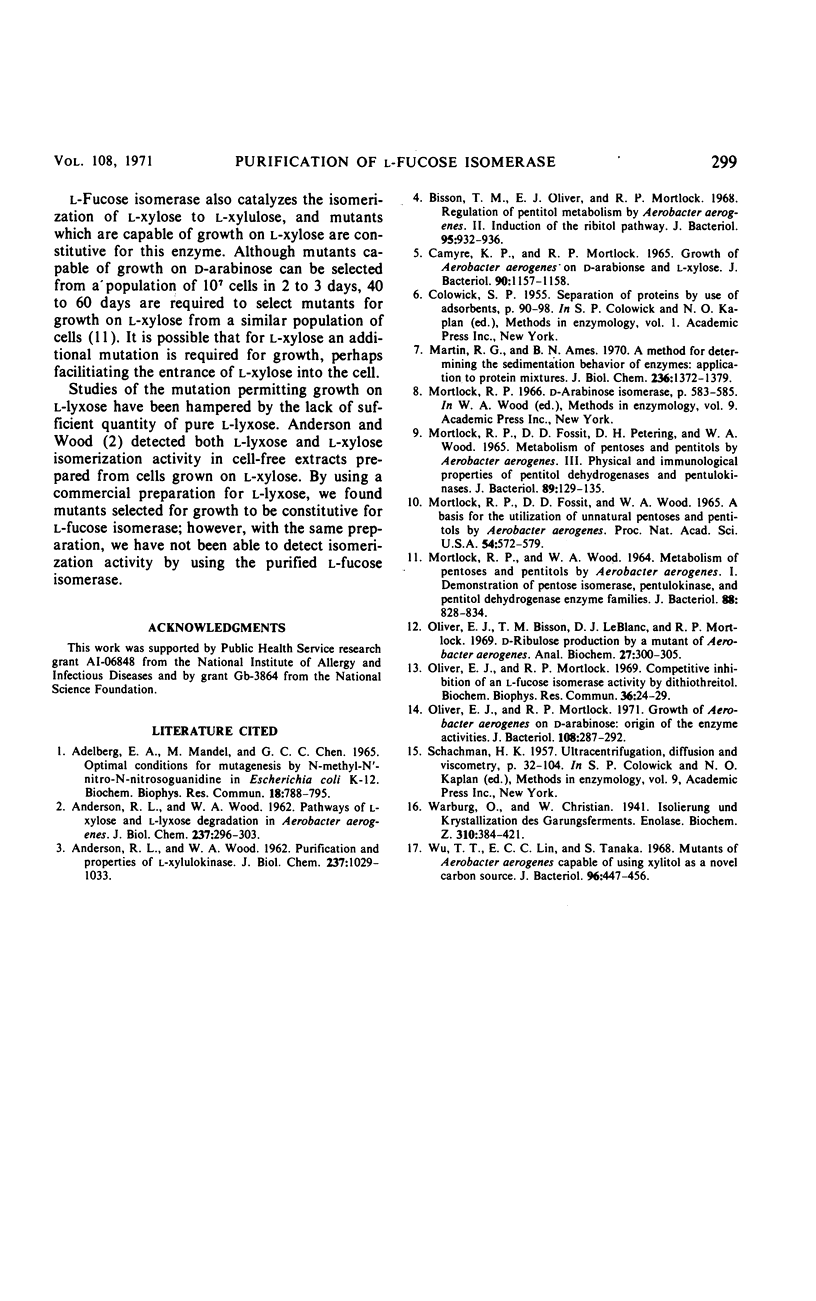
Images in this article
Selected References
These references are in PubMed. This may not be the complete list of references from this article.
- ANDERSON R. L., WOOD W. A. Pathway of L-xylose and L-lyxose degradation in Aerobacter aerogenes. J Biol Chem. 1962 Feb;237:296–303. [PubMed] [Google Scholar]
- ANDERSON R. L., WOOD W. A. Purification and properties of L-xylulokinase. J Biol Chem. 1962 Apr;237:1029–1033. [PubMed] [Google Scholar]
- Bisson T. M., Oliver E. J., Mortlock R. P. Regulation of pentitol metabolism by aerobacter aerogenes. II. Induction of the ribitol pathway. J Bacteriol. 1968 Mar;95(3):932–936. doi: 10.1128/jb.95.3.932-936.1968. [DOI] [PMC free article] [PubMed] [Google Scholar]
- Camyre K. P., Mortlock R. P. Growth of Aerobacter aerogenes on D-arabinose and L-xylose. J Bacteriol. 1965 Oct;90(4):1157–1158. doi: 10.1128/jb.90.4.1157-1158.1965. [DOI] [PMC free article] [PubMed] [Google Scholar]
- MARTIN R. G., AMES B. N. A method for determining the sedimentation behavior of enzymes: application to protein mixtures. J Biol Chem. 1961 May;236:1372–1379. [PubMed] [Google Scholar]
- MORTLOCK R. P., FOSSITT D. D., PETERING D. H., WOOD W. A. METABOLISM OF PENTOSES AND PENTITOLS BY AEROBACTER AEROGENES. 3. PHYSICAL AND IMMUNOLOGICAL PROPERTIES OF PENITOL DEHYDROGENASES AND PENTULOKINASES. J Bacteriol. 1965 Jan;89:129–135. doi: 10.1128/jb.89.1.129-135.1965. [DOI] [PMC free article] [PubMed] [Google Scholar]
- Mortlock R. P., Fossitt D. D., Wood W. A. A basis for utlization of unnatural pentoses and pentitols by Aerobacter aerogenes. Proc Natl Acad Sci U S A. 1965 Aug;54(2):572–579. doi: 10.1073/pnas.54.2.572. [DOI] [PMC free article] [PubMed] [Google Scholar]
- Oliver E. J., Bisson T. M., LeBlanc D. J., Mortlock R. P. D-Ribulose production by a mutant of Aerobacter aerogens. Anal Biochem. 1969 Feb;27(2):300–305. doi: 10.1016/0003-2697(69)90036-0. [DOI] [PubMed] [Google Scholar]
- Oliver E. J., Mortlock R. P. Competitive inhibition of an L-fucose isomerase activity by dithiothreitol. Biochem Biophys Res Commun. 1969 Jul 7;36(1):24–29. doi: 10.1016/0006-291x(69)90643-3. [DOI] [PubMed] [Google Scholar]
- Oliver E. J., Mortlock R. P. Growth of Aerobacter aerogenes on D-arabinose: origin of the enzyme activities. J Bacteriol. 1971 Oct;108(1):287–292. doi: 10.1128/jb.108.1.287-292.1971. [DOI] [PMC free article] [PubMed] [Google Scholar]
- Wu T. T., Lin E. C., Tanaka S. Mutants of Aerobacter aerogenes capable of utilizing xylitol as a novel carbon. J Bacteriol. 1968 Aug;96(2):447–456. doi: 10.1128/jb.96.2.447-456.1968. [DOI] [PMC free article] [PubMed] [Google Scholar]



